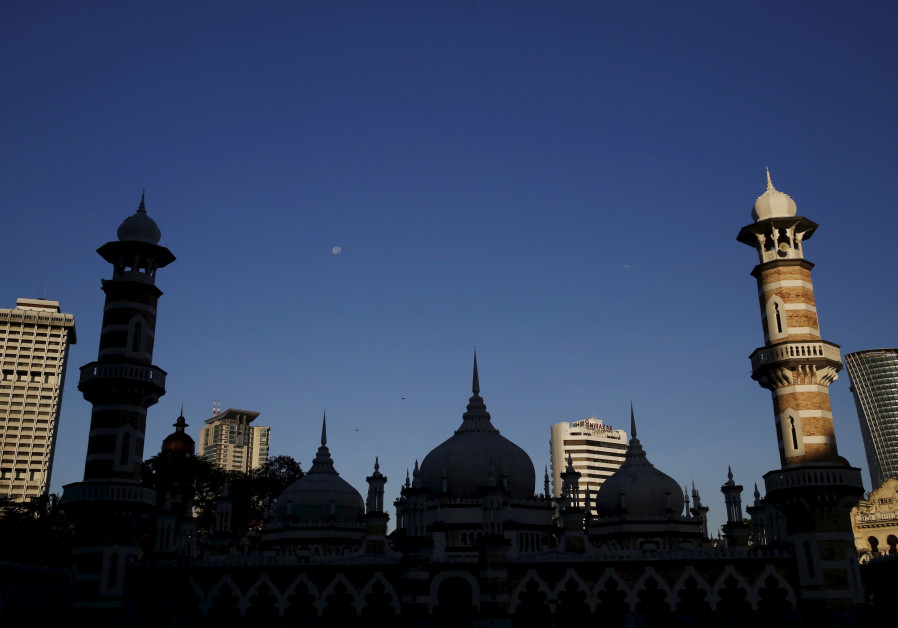ANALYSIS: Hi-tech hit-list

A mosque is silhouetted against city buildings in Kuala Lumpur, Malaysia, January 27, 2016.. (photo credit: OLIVIA HARRIS/ REUTERS)
It seems that the most dangerous job for a Hamas terrorist these days is no longer being a combat soldier, but working in hi-tech.
The Mossad has been accused by Hamas and some local Malaysians of assassinating Fadi Muhammad al-Batsh in a drive-by motorcycle shooting near a mosque in Malaysia on Saturday.
As of Sunday, the Malaysian government still had no suspects, but was prepping for an autopsy of Batsh, who has been identified as a Hamas electrical engineering expert both for designing drones and rockets.
Al-Batsh’s assassination, if it was carried out by the Mossad, could very well line up with the December 15, 2016, assassination in Tunis of Muhammad al-Zawari – also credited by most to the Mossad.
Zawari was an aeronautical engineer who manufactured drones for Hamas, and possibly also for Hezbollah.
Reports from Tunis indicated that he also designed an unmanned naval vessel that could attack other sea vessels from under the water.
There have been hints according to foreign reports that the Mossad has had ongoing operations in Syria and Iran; it is routinely expected to be active in regions across the globe.
But these assassinations of Hamas hi-tech weapons experts are different – because until now, Hamas targets tended to be military commanders, major financiers and those who had masterminded terrorist attacks on Israel.
A pattern of hits on Hamas engineers could show that the Mossad’s thinking has evolved to consider the militant group’s weapons experts to be the far larger and more irreplaceable threat in comparison to military commanders.
This would seem to go along with Mossad chief Yossi Cohen’s increased focus on hi-tech, with the Mossad opening a fund for investing in technology start-ups for the first time during his term.
It could also be considered the application of some lessons learned from what are presumed to be a significant number of Mossad hits and encouraged defections of Iranian scientists between 2005-2010.
The next most important question will be: Even if everyone points a finger at the Mossad, will there be real evidence and real footprints or will the main evidence be how untraceable the assassins were?
Presuming the operation in Tunis was done by the Mossad, the elite spy agency under Cohen showed that it has discovered how to pull off assassinations in an age where most everything seems to be caught on video.
In contrast, the alleged Mossad assassination of top Hamas official Mahmoud al-Mabhouh in 2010 in Dubai was considered a major failure because video footage was eventually dug up that revealed all of the agents’ identities.
Between five to 10 foreign suspects were rounded up and questioned by Tunisian police, but it appears that all of them were duped or otherwise used by actual Mossad agents to carry out any activity that could be videotaped.
No video footage ever emerged, and Hamas and others complained that Tunisian investigators did not finish their probe.
Will the Malaysia hit be more like Dubai or more like Tunis?
Early evidence suggests it will be like Tunis.
Although Malaysian authorities have mentioned video footage of the assassins, the most they have shared to date was that they were possibly white and European looking.
There are still no clear photos or videos with faces and the murder weapons have not been found. At least one report indicated that the assassins’ faces may have been obscured by motorcycle helmets.
If there is no footage of their faces, the only chance of figuring out their identities would be by trying to track any pre-planning and surveillance activities.
But if they learned the lessons of Tunis, they will have used and duped third-party locals into carrying out other activities that could have been filmed.
Only time will tell, but it seems likely that hi-tech hits and avoiding hi-tech detection are the formula for such operations from now on.





Comments are closed.